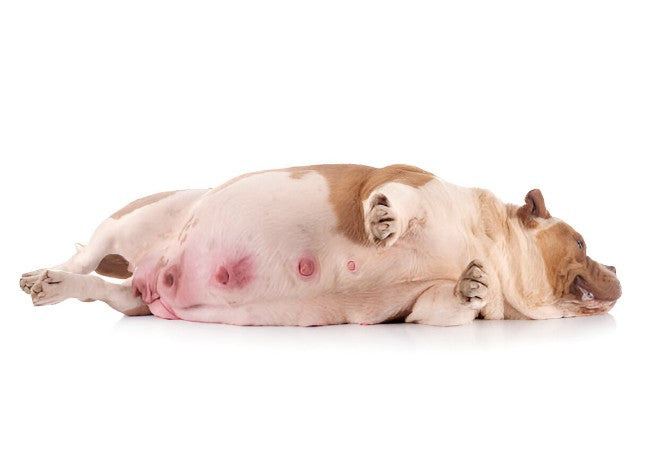Vet’s Guide to Lumps, Bumps & Cysts in Dogs in 2025 🩺🐕

In this article
Vet’s Guide to Lumps, Bumps & Cysts in Dogs in 2025🩺🐕
By Dr. Duncan Houston BVSc
Discovering a lump, bump, or cyst on your dog can be concerning, but most are benign. In this comprehensive 2025 guide, veterinarian Dr Houston explores the types, causes, and treatment options, backed by expert vet advice and brand support from Ask A Vet. Over 2,000 words with Arabic clarity, SEO optimization, and engaging emojis for easy web publishing.
1️⃣ Why Lumps on Dogs Matter
Most lumps are harmless—like lipomas, warts, or cysts—but a small number may be malignant (e.g., mast cell tumors). Early evaluation is key.
2️⃣ Common Skin Masses in Dogs
🟡 Lipomas (Fatty Tumors)
Soft, mobile, benign, usually seen in older or overweight dogs.
⚪ Sebaceous & Follicular Cysts
Often filled with sebum or keratin; may leak or become infected. Common in middle-aged dogs and some breeds.
🔴 Histiocytomas
Young dogs—raised red button-like growths that often regress on their own.
🐝 Warts, Skin Tags & Button Tumors
Caused by minor trauma or viral factors, benign and often require no treatment.
🟠 Mast Cell Tumors
Can be benign or malignant, often ulcerate or bleed. Around 20% of skin tumors in dogs; aggressive forms metastasize.
💧 Cysts (Dermoid, False, Hydr)
From embryonic remnants, trauma, or blocked glands. Appear as fluid-filled pockets—many are benign.
🧨 Hygromas
Fluid-filled sacs over pressure points (e.g., elbows). Usually harmless but may require intervention if infected.
❓ Other Masses
Neoplasms like squamous cell carcinoma, lymph node swelling, or abscesses.
3️⃣ Detecting & Monitoring Lumps
- Perform weekly body checks.
- Note size, shape, location, and growth rate.
- Photograph with a ruler for comparison over time.
Growths from repeated friction (tags, warts) are common and mostly harmless.
4️⃣ When to See Your Vet or Ask A Vet
Any mass that is new, changing, bleeding, ulcerated, or painful—especially in older dogs—should be evaluated promptly via vet or telehealth like Ask A Vet.
5️⃣ Vet Diagnostic Tools
🩺 Physical Exam
Feel consistency, mobility, and attachment to deeper tissues.
🔬 Fine Needle Aspiration (FNA)
Quick, minimally invasive test to identify cell types; initial screening.
🔍 Biopsy
Provides definitive diagnosis when FNA is inconclusive or suspicion of malignancy arises.
📷 Imaging Ultrasound / X-Ray
Helps assess deeper involvement or metastasis in tumors like mast cell masses.
6️⃣ Treatment Approaches
💊 Monitoring Only
Small benign masses (lipomas, warts, mild cysts) may not require intervention.
🧭 Medical Management
Infected cysts may need antibiotics or anti‑inflammatories. Topicals for minor lesions.
✂️ Surgical Removal
Definitive for cysts, cystadenomas, and malignancies; minimal margins often suffice for benign masses.
🧠 Oncologic Therapies
For malignant masses like mast cell tumors, treatment includes full excision, radiation, chemotherapy, and targeted drugs like tyrosine kinase inhibitors.
⚙️ Managing Hygromas
Soft bedding, elbow pads; drainage or surgery only when infected or chronically inflamed.
7️⃣ Preventive Tips & At-Home Care
- Ask A Vet telehealth follow-ups for mass monitoring.
- Maintain a healthy weight to reduce lipoma formation.
- Groom regularly to spot masses early.
8️⃣ Breed & Age Factors
Older dogs develop lipomas and cysts more frequently. Specific breeds—Boxers, Schnauzers, Sighthounds—are prone to cysts or tumors.
9️⃣ Prognosis & What to Expect
- Benign lumps—excellent prognosis, low recurrence.
- Cyst removal—typically curative.
- Mast cell tumors—prognosis based on grade and extent; early removal improves survival.
- Hygromas—resolve with padding; infection may prolong healing.
🔟 Take-Home Reminders
- Examine your dog weekly—photo/document lumps.
- Use Vet or Ask A Vet for early evaluation.
- Confirm diagnosis via FNA or biopsy.
- Discuss treatment plan tailored to type, size, and location.
- Follow recovery protocols—medicine, rest, stress relief.
👩⚕️ Why Seek Professional Care
Veterinary expertise is vital due to overlapping mass appearances—benign vs malignant. Proactive treatment safeguards your dog’s well-being.
🏁 Final Thoughts
Most lumps in dogs are harmless, but readiness is essential. With early identification, accurate diagnosis, and tailored treatment—alongside telehealth support like Ask A Vet and enrichment from you can ensure your pup’s comfort and health in 2025 and beyond.
For expert advice, post-treatment check‑ins, or emergency guidance, visit AskAVet.com and download the Ask A Vet app today 🐶❤️📱 .






